
If you are a chess player who enjoys tricking your opponent, then the Halloween Gambit is for you. It appears insane at first, but it’s a lot of fun to play, particularly when your opponent has no idea about this opening.
The gambit originates from the Four Knights Game. Under normal circumstances, this opening is calm and balanced, where both sides develop their pieces gradually. Then, all of a sudden, something crazy occurs.

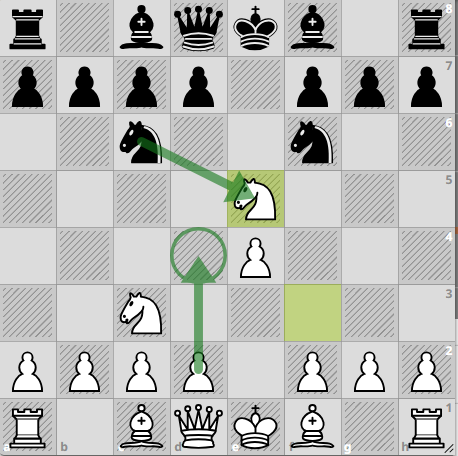
The moves are as follows:
1. e4 e5 2. Nf3 Nc6 3. Nc3 Nf6 4. Nxe5
Yes, White has simply sacrificed a knight for a pawn. It seems to be an outright blunder. But there is a sneaky idea behind this.
The Idea Behind It
When White sacrifices the knight, what he aims to do is capture the center and attack quickly. After 4… Nxe5 5. d4, White begins to drive both of Black’s knights away as shown in the above image, and opens a great deal of space. Those two pawns in the middle are extremely powerful and intimidating.
Although you are at a piece disadvantage, you have an enormous head start on development. Your pieces emerge rapidly, your pawns advance, and your opponent is caught off guard.
A lot of good players have employed this concept to catch their opponents off guard. Grandmaster Maxime Vachier-Lagrave has played it before and defeated his opponent easily. It proves to be a great opening, particularly in blitz or bullet games, where individuals are panicking with the clock.
When to
The Halloween Gambit is effective because it surprises people. The majority of players anticipate a peaceful game when they spot the Four Knights. But with the sudden move Nxe5, they are not ready. It transforms the whole game with one move.
Jakob, the originator of this idea, once stated, “Many players are surprised, the way they would be scared by a Halloween mask, when they have prepared themselves mentally for a dull Four Knights, and then suddenly they are confronted with Nxe5.”
That says it all. The Halloween Gambit is as much psychology as it is tactics. You frighten your opponent from the very start.
The Core Plan
After 4… Nxe5 5. d4, here is what White should do:
- Push the pawns to gain more control, your opponent if not prepared, will blunder.
- Develop the bishops and queen quickly.
- Keep attacking before Black can organize.
- Use your space advantage to limit Black’s movement. i.e. black unable to develop knight because the pawn consumes the key squares.
Even though you gave up a knight, your opponent will often find it hard to move their pieces. They might even start to panic as your pawns and pieces rush forward.
What Comes Next (Main Variations)
Now that you understand the idea of the Halloween Gambit, let’s look at a few variations to see how the attack actually works in real games.
Next, we will go through:
Variation 1: The Knight moves forward (5…Ng4)
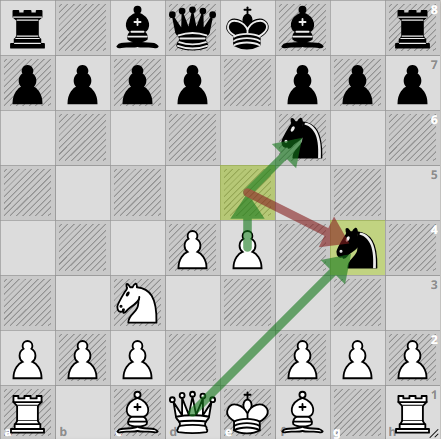
You simply play e5, and it’s a double attack on both knights. You get back material easily while in a dominant positional advantage because of the development.
Variation 2: The Retreat (5…Nc6)
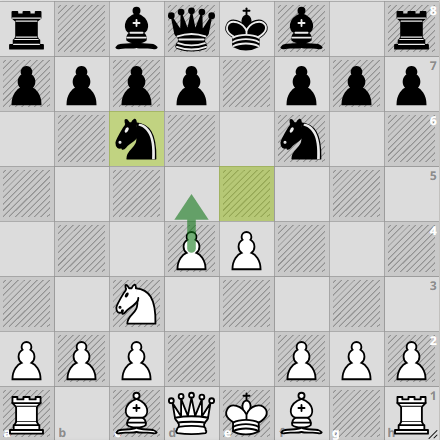
If black tries to retreat, you simply punish them with your pawns. Play d5.

Knight thinks it’s safe at e5, until you play f4. Now it’s getting annoying for black.
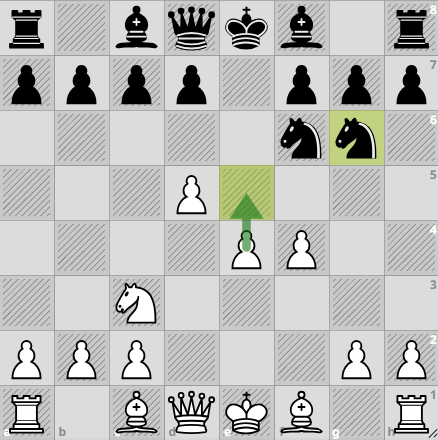
Your pawns are dominating, after black Ng6, you play e5 and force black to push back.

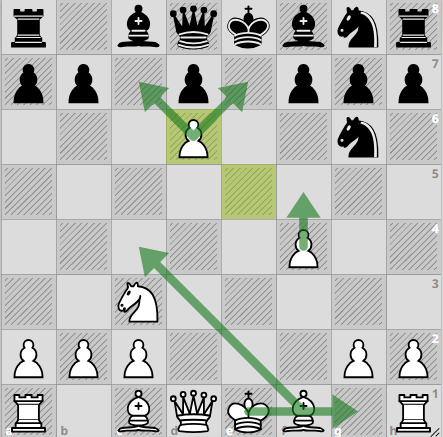
If black knight retreats back, you play d6, a bold move as it leads to the strongest white development since it controls all key squares and makes it difficult for black to do development. Next you can develop your bishop as well and castle, develop the queen and attack. Just follow the basic principles and you’re unstoppable.
Variation 3: Another Retreat (…Ng6)
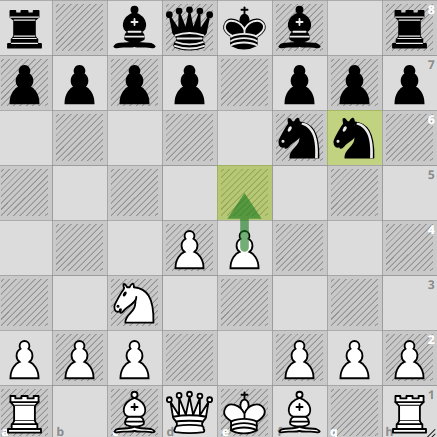
Here you should push the pawn, make black retreat.
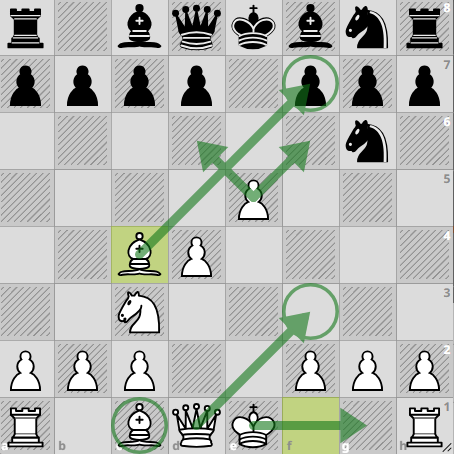
After black retreats, you have a dominant position, you can simply follow the key plan and punish black as shown in the image.
If you want to learn creative openings like this and improve your game with expert guidance, join The New England Chess School. We have specialized coaches, years of experience, and we regularly organize prize tournaments to help you grow fast and play your best.